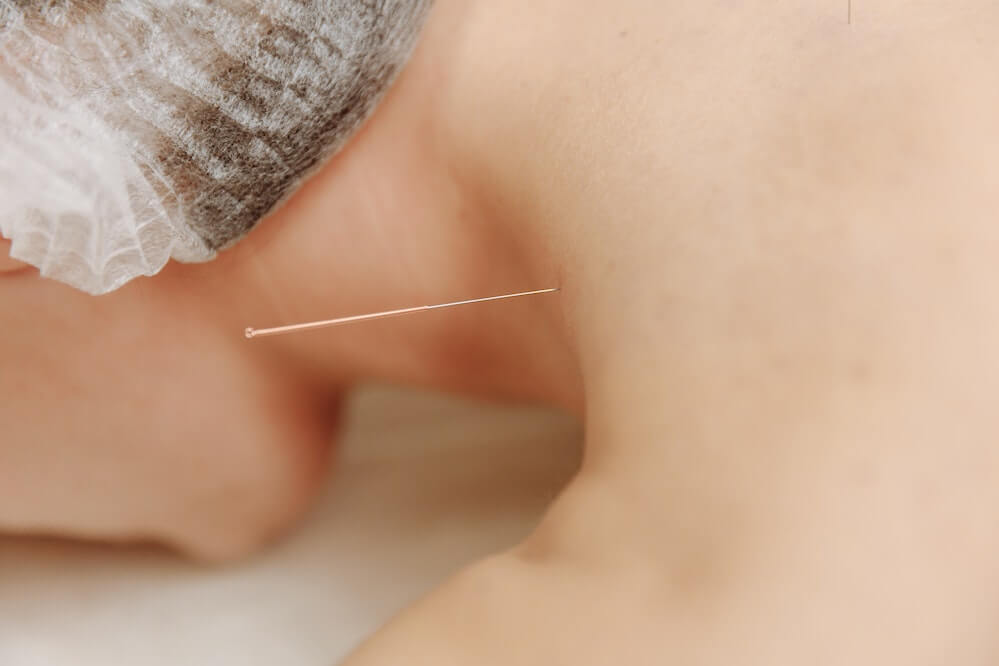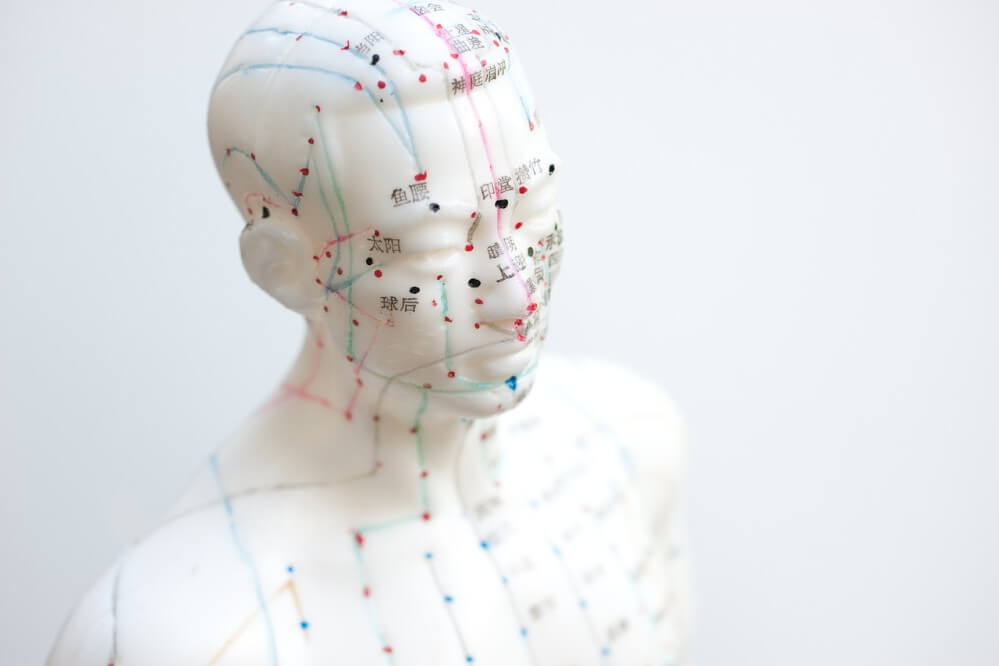In line with “Everything comes with a price,” the shoulder joint has the most mobility in the body, but its increased mobility makes it more susceptible to multiple types of injuries. Injuries can stem from accidents, overuse, medical conditions, etc., making completing daily activities and participating in athletic hobbies challenging.
While traditional treatment includes rest, physical therapy, medication, or even resorting to surgery as an alternative treatment, acupuncture shows promise in alleviating shoulder pain. In this blog, we explore how acupuncture can help shoulder pain while focusing on specific acupuncture shoulder pain points. So, follow along and discover the healing properties of acupuncture and how you can regain comfort and mobility.
What is Acupuncture?

Rooted in Traditional Chinese Medicine principles, acupuncture is an ancient practice involving skin penetration with thin, metallic needles to stimulate specific points in the body. The World Health Organization (WHO) notes the existence of 361 acupuncture points interconnected by 12 primary energy pathways or meridians that allow the free flow of vital energy, commonly referred to as “Qi.”
Acupuncture exhibits a broad spectrum of applications, mainly oriented to treating pain-related conditions such as headaches, osteoarthritis, neck, shoulder, back, and knee pain, menstrual cramps, tennis elbow, etc. Beyond pain management, other acupuncture uses include reducing stress and anxiety, chemo-related side effects, weight loss, and many more.
Using Acupuncture for Shoulder Pain
Shoulder pain refers to pain, soreness, discomfort, or any unpleasant sensation felt around the shoulder area. It can manifest as mild discomfort or severe pain affecting the mobility and functionality of the shoulder joint.
Causes of shoulder pain can stem from various factors such as overuse, medical conditions, acute injuries, and referred pain from other body parts such as heart or gallbladder disease. The primary source of shoulder pain is rotator cuff tendinitis, which refers to the condition wherein the rotator cuff tendons become trapped beneath the bony structure in the shoulder. Frozen shoulder, bone fractures, arthritis, dislocation of the shoulder, nerve injury, tears of the rotator cuff tendons, poor shoulder posture, etc., can also cause shoulder pain.
An emerging treatment for shoulder pain is acupuncture, whose well-documented results on pain management show promise in alleviating shoulder pain. Acupuncture for shoulder pain displays potential by promoting the release of endorphins or the “feel-good” chemicals that relieve pain and stress. Another well-known benefit of acupuncture is improving blood circulation, thus reducing inflammation and promoting tissue healing. Lastly, acupuncture can address common shoulder pain sources by relaxing muscles and improving joint mobility.
While scientific research on the efficacy of acupuncture for shoulder pain has limitations, based on the current data, acupuncture shows promise as an alternative treatment or in conjunction with other treatments like moxibustion or physical therapy to ease pain and discomfort and reduce inflammation.
Acupuncture Shoulder Pain Points

Acupuncture looks at ailments from a broader perspective, not only in treating symptoms but also in finding the root of the issue. According to TCM beliefs, pain is manifested by the disruptions and blockages of the flow of Qi, which in turn come from cold, dampness, wind, and, more typically, injuries. After thoroughly discussing your medical history, the intensity and nature of the pain, what makes it worse, etc., the practitioner will find the specific points to help your condition.
During the acupuncture session for treating shoulder pain, the practitioner activates specific acupuncture points, which include:
— Bi Nao or LI 14: Located on the radial side of the upper arm, seven cun above the LI11 acupuncture point. It can remove obstructions from the Large Intestine meridian, reduce shoulder pain, and help eliminate weakness in the upper arm.
— Yun Men or LU 2: Situated six cun lateral to the anterior midline, below the clavicle in a depression medial to the coracoid process. This acupoint can regulate Lung Qi deficiency and can serve as a local shoulder point.
— Tian Quan or PC 2: Found two cun inferior to the anterior axillary fold between the two heads of the biceps brachii muscle. The stimulation of this acupoint can open the chest and invigorate the blood, thus alleviating localized pain in the shoulder.
— Ji Quan or HT 1: Located on the center of the axilla fossa on the radial side of the axillary artery when the upper arm is abducted. As it regulates the flow of Qi from the torso to the arm and vice versa, it also removes numbness and pain in the shoulder and arm. Furthermore, it can help with frozen shoulder.
— Huatuojiaji or C4 Huatuo: Found half a cun lateral to the lower border of spinous processes of the C4 acupuncture point. It can help alleviate shoulder and neck pain due to holding tension on the upper parts of the body.
— Fu Fen or UB 41: Situated at three cun lateral to the Du meridian on a level with the second thoracic vertebra on the border of the scapula and lateral to UB12. This acupoint helps dispel cold and wind from the upper back and neck, thus reducing shoulder and neck pain.
— Jian Yu or LI 15: Situated antero-inferior to the acromion, in the depression at the anterior border of the acromioclavicular joint when the arm is abducted 90 degrees. It can influence the symptoms of many shoulder issues, such as frozen shoulder, range of motion issues, rotator cuff injuries, etc.
— Yang Lao or SI 6: Found with the palm facing the chest, it’s located dorsal to the head of the ulna in the depression on the radial side of the styloid process. It helps treat acute and severe shoulder, neck, and arm pain.
Shoulder anatomy
By its definition, the shoulder is a complex joint connecting the upper arm and the thorax and allows a wide range of motion. Here’s a brief overview of the anatomy of the shoulder and its key components:
The shoulder is made of three bones, the scapula, clavicle, and humerus. The two joints that give the shoulder mobility are the acromioclavicular and glenohumeral joint. Tendons connect the muscles to the bones, thus ensuring the movement of the bones and the security of the humerus on the socket.
Other structures that make the shoulder include:
— The labrum: a cartilage ring surrounding the glenoid.
— The deltoid: the strongest and largest muscle of the shoulder.
— The biceps tendon: allows the forearm to rotate and the elbow to bend.
Who Should Avoid Acupuncture?

While acupuncture is a non-invasive and highly safe procedure, it can have some short-term mild side effects. These may include fatigue, blood (or pain) where the needles puncture the skin, nausea, dizziness, drowsiness, etc.
Furthermore, despite its suitability for all age brackets, acupuncture is still a unique experience that may not work for everyone. Some are even advised to avoid it entirely, as it may not be a safe treatment. These cases include:
— Having a pacemaker
— Having metal allergies
— Having blood disorders like hemophilia
— Currently taking blood thinners
— Being pregnant
We suggest you consult a qualified practitioner or primary care provider and discuss your medical history before incorporating this treatment into your healthcare regimen for optimal safety and efficacy.
Wrapping up
Acupuncture, with its tried-and-true techniques, offers a promising option for alleviating shoulder pain and discomfort and restoring overall well-being. The strategic placement of acupuncture needles in specific acupuncture points induces many benefits, including improving blood circulation, muscle relaxation, and tissue healing.
When treating shoulder pain, the acupuncture practitioner activates specific points, like Bi Nao or LI 14, Yun Men or LU 2, Tian Quan or PC 2, Ji Quan or HT 1, and more. While each individual responds differently to acupuncture treatment, the research shows it can significantly relieve shoulder pain. Furthermore, it’s a non-invasive holistic treatment that goes beyond symptom relief.
If you are feeling burdened and limited by shoulder pain, we invite you to our Holistic Wellness Center based in Columbus, OH, where you’ll get the chance to bid farewell to discomfort and pain and start a new chapter in your life.